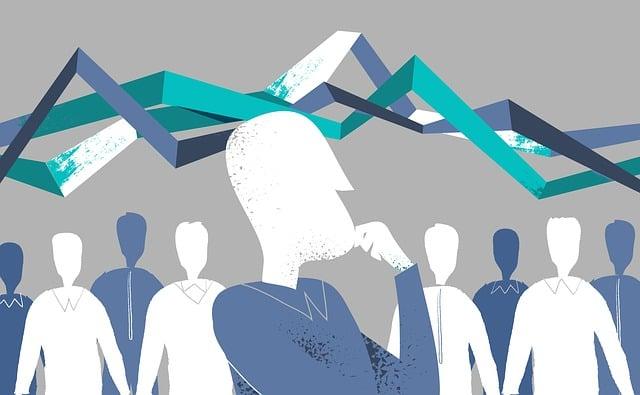As the sun rises over the bustling cities of Pakistan, a transformation is quietly unfolding within the workforce. With a young population brimming with potential and ambition, the country stands at a crossroads, where tradition meets modernity and challenges give way to opportunities. However, this evolving landscape is not without its hurdles. From the rapid pace of technological advancement to the shifting demands of a global marketplace, navigating the complexities of Pakistan’s workforce requires a keen understanding of both the obstacles and prospects ahead. This article delves into the multifaceted challenges that lie before us—examining the trends reshaping labor dynamics, the skills gap hindering progress, and the innovative solutions needed to harness the full potential of this vibrant workforce. Together, let’s explore the path forward in a nation poised for change.
Shifting Demographics and Their Impact on Employment Trends
The changing demographic landscape of Pakistan has profound implications for the workforce, creating a dynamic environment that necessitates adaptation from both employers and employees. With a youthful population increasingly entering the job market, there is an urgent need to align education systems with employers’ needs. This generational shift emphasizes the demand for skills in technology, innovation, and critical thinking. Furthermore, urbanization is accelerating, leading to migration from rural to urban areas, thereby intensifying competition for available positions. Employers must now adapt to a workforce that is more digitally savvy, possessing distinct expectations regarding work-life balance and career progression.
In addition to youth influx, we are witnessing an upward trend in female participation in the labor market. This shift not only contributes to economic growth but also challenges traditional workplace norms and structures. Organizations need to embrace diversity and develop inclusive policies that recognize the abilities and needs of a multigenerational workforce. Balancing flexible work arrangements with the evolving demands of a diverse employee base will be crucial. Identifying the right strategies may involve analyzing workforce data to address gaps in skills and ensuring training programs are up-to-date and relevant.
| Demographic Factor | Impact on Employment Trends |
|---|---|
| Youth Population Growth | Increased demand for tech-savvy skills |
| Urbanization | Competition for jobs intensifies |
| Female Workforce Participation | Emergence of new workplace policies |
| Multigenerational Workforce | Diverse training and development needs |

Bridging the Skills Gap: Education Reform for a Competitive Edge
As industries evolve and technology advances, the mismatch between current educational curricula and market demands has become increasingly evident in Pakistan. The need for education reform that emphasizes practical skills and critical thinking is essential for our youth to thrive in a competitive workforce. To bridge this gap, educational institutions must focus on integrating hands-on training and industry partnerships into their programs. This approach not only equips students with relevant skills but also fosters innovation and adaptability in an ever-changing job landscape.
To effectively implement change, several strategies can be adopted:
- Curriculum Overhaul: Revamping existing courses to include emerging technologies, such as AI and data analytics.
- Industry Collaboration: Forming alliances with local businesses to co-develop training programs that cater directly to employer needs.
- Soft Skills Development: Incorporating communication, teamwork, and problem-solving skills into the curriculum to prepare students for real-world challenges.
| Skill Type | Importance for Employers | Current Shortage |
|---|---|---|
| Technical Skills | High | Significant |
| Analytical Skills | Medium | Moderate |
| Soft Skills | High | Critical |

Embracing Technological Advancements in Workforce Development
In today’s fast-paced world, integrating advancements in technology is vital for enhancing workforce development strategies. With the rise of digital platforms, companies in Pakistan have the opportunity to harness innovative training tools and analytics to better identify skill gaps and tailor educational programs. Key technologies driving this transformation include:
- Artificial Intelligence: Utilizing AI for personalized learning experiences.
- Virtual Reality: Simulating real-world work scenarios for practical training.
- Data Analytics: Analyzing workforce trends to inform strategic planning.
As organizations embrace these tools, they can significantly improve employee engagement and retention rates. However, there are challenges to address, such as the need for upskilling and reskilling existing staff to effectively interact with new technologies. To facilitate this transition, a collaborative approach among educational institutions and corporate sectors is essential. Establishing dedicated training programs can empower employees, ensuring they adapt to ongoing changes in the job landscape. The following table outlines some essential skills that should be prioritized:
| Skill | Description |
|---|---|
| Digital Literacy | Understanding and using technology effectively. |
| Critical Thinking | Analyzing issues and making informed decisions. |
| Collaboration Tools | Using technology to work effectively in teams. |

Cultivating Inclusive Work Environments for Sustainable Growth
In today’s rapidly changing job market, fostering an environment that encourages inclusivity can significantly enhance organizational performance and drive sustainable development. Organizations must prioritize diversity and equity by implementing policies that nurture a sense of belonging among employees from various backgrounds. This involves not only creating equitable hiring practices but also ensuring accessibility to growth opportunities that allow all employees to thrive. By embracing diverse perspectives, companies can cultivate innovative solutions and adapt more effectively to the shifting dynamics of the workforce.
Additionally, it is essential to establish ongoing training and educational initiatives that focus on cultural competence and unconscious bias, empowering employees to contribute meaningfully to a collaborative atmosphere. Consider integrating a mentorship program that pairs seasoned leaders with new or marginalized employees to foster supportive relationships. Moreover, incorporating flexible work arrangements can cater to a wide range of employee needs, enhancing job satisfaction. Here’s a simple framework to consider:
| Strategy | Benefits |
|---|---|
| Diverse Hiring | Broader ideas and perspectives |
| Mentorship Programs | Enhanced employee retention and engagement |
| Flexible Work Policies | Improved work-life balance |
Final Thoughts
As we draw the curtain on this exploration of Pakistan’s evolving workforce, it becomes evident that we stand at a crossroads. The landscape of employment is undergoing profound changes, shaped by technological advancements, demographic shifts, and shifting global demands. While opportunities abound, so too do considerable challenges that threaten to upend the traditional paradigms of work.
Navigating this terrain requires a collective effort from policymakers, businesses, and educational institutions to cultivate an adaptable, skilled workforce capable of thriving in a rapidly changing environment. By fostering a culture of innovation and lifelong learning, we can equip future generations to not only meet the demands of today but also to anticipate the needs of tomorrow.
The journey ahead may be fraught with uncertainties, but it is also rich with potential. As we move forward, let us embrace the complexities of this new era with resilience and determination, ensuring that no one is left behind in the pursuit of progress. Together, we can transform the challenges of today into the opportunities of tomorrow, charting a path for a brighter economic future for all in Pakistan.



